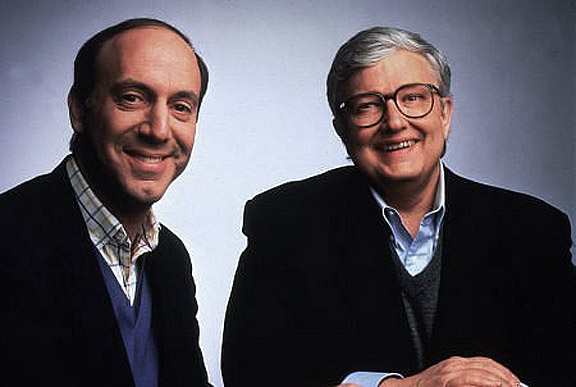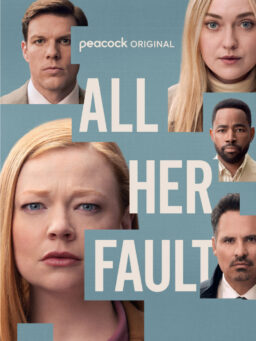In the Broadway production of “Wishful Drinking” (developed at the Geffen Playhouse, before eventually moving to Broadway for a successful run in 2009-10), Carrie Fisher said that right after getting the role of Princess Leia, she was told she needed to lose 10 pounds. She said, “Please realize that I weighed 105 pounds at that point – and 90% of it was IN MY FACE.” As the waves of laughter erupted through the theatre, Fisher (who had made her first entrance in full Leia regalia, to a gigantic ovation) kept going in her classic deadpan: “So what do you do when someone has a wide face? Naturally you give them a hairdo that makes it even wider.” I remember the show vividly but that particular moment stands out: her way with words, her killer timing (the old-pro pause for the big laugh, the holding back of the capper of the joke before unleashing it.) The laughter wasn’t so much of identification, but pure delight at her language, her observations, her mind.
Recognizing the absurdity of her given circumstances as a human on this planet was Fisher’s first gift, and it took a while for her to understand that it even was a gift. She was born to two famous parents, actress Debbie Reynolds and singer Eddie Fisher. Fisher, famously, upped and left Reynolds for Elizabeth Taylor in a blitzkrieg of publicity and scandal. Pictures of Reynolds appeared in the tabloids weeping on her front steps, with curlers in her hair, the scorned fuddy-duddy wife. The scandal was epic. Carrie Fisher was two years old at the time. The chaotic swirl of the adults around her never stopped. (In “Wishful Drinking” Fisher would illustrate this, hilariously, with a gigantic interconnected diagram of huge famous faces, entitled “Hollywood Inbreeding 101.”) Fisher found an escape in books. She loved to read. After all, literature was filled with crashing love affairs and scandal and heightened emotions, too.
She got started as an actress as a teenager, first in a Broadway revival, before landing the role of Lorna in Hal Ashby’s “Shampoo,” playing the smart-cookie teenager in a tennis outfit, completely unfazed by the rumpled sex-hound persona of George (Warren Beatty), her mother’s hairdresser (and paramour). Fisher and Beatty have a great scene in the kitchen, where Fisher, cool as a cucumber, dominates this much older and extremely charismatic movie star. And he lets her. She chews on a carrot, staring at him in a bemused “Come ON, buddy, I know the score” way, and he falls apart trying to keep up with her. It’s a striking debut.
One year later she was cast as Princess Leia in George Lucas’ “Star Wars,” and her life changed forever, to a degree that few actresses ever experience. It’s one thing to appear in a successful film. It’s one thing to become a star. But it’s another thing entirely to appear in a cultural touchstone-zeitgeist-gamechanger. Fisher wrote that she didn’t fully understand how huge “Star Wars” actually was, until she saw that there was a Pez dispenser in her likeness. She realized, “Okay, so this is something else.” Her parents were famous but this was something else. It was a juggernaut.
Over the next seven years came “The Empire Strikes Back” and “Return of the Jedi,” as well as an episode of Shelley Duvall’s popular “Faerie Tale Theatre” (she played Thumbelina), an episode of “Laverne and Shirley” and a very entertaining “Saturday Night Live” hosting gig in 1980. She knew all of the “Saturday Night Live” original cast very well, as did Paul Simon, her eventual (short-term) husband, and her hosting gig in 1980 is an episode I remember very well. I was a child: seeing Princess Leia out of her white get-up and distinctive hairdo was like catching a glimpse of my 3rd grade teacher off school grounds. (She’s … real?) She was very memorable as the ex-girlfriend in the tunnel on a rampage with a machine gun in “The Blues Brothers,” wonderful in Woody Allen’s “Hannah and Her Sisters,” and lovely in Sidney Lumet’s “Garbo Talks.”
Her first novel, Postcards From the Edge, told the story of actress Suzanne Vale, cowering in her famous mother’s shadow, popping pills and nearly dying of an overdose. Told in a fragmented non-linear style, it is full of the zingy one-liners by which Fisher’s work would eventually be known. There is pain in the book. It’s obvious. Hollywood is a dark and corrupt place. But the humor is paramount. This may be called “denial” in some circles. And her work has often been criticized (wrongly) for not going deep enough, for relying on the wisecrack. This is a result of the self-help-ification of our culture. For Fisher, for so many people, humor is survival.
Meryl Streep and Shirley MacLaine starred as mother and daughter in the film version of “Postcards From the Edge,” directed by Mike Nichols, with Carrie Fisher writing the adaptation. Meryl Streep has described reading the script and wondering what her “way in” would be to this character. How does Suzanne dress? What does she eat? What’s her hair like? Streep needed to get that internal picture before she began, so she thought she’d go to the source. She asked Fisher, “Tell me what this person is like.” Fisher thought a bit and answered, “She’s all girl.” Streep nodded, like, “Got it.” Fisher was an actress. She knew Streep didn’t need a monologue, just one very concise image from which to start. There are too many memorable lines in “Postcards” to count (“Instant gratification takes too long.” “Lana? Joan? These are the options?”).
There would be more books after “Postcards” (“Surrender the Pink,” “Delusions of Grandma”, “The Best Awful”) as well as a successful career as a script doctor. She appeared in more films, usually in small one-off roles, the exception being her memorable turn as Marie, Sally’s best friend in the enormously popular “When Harry Met Sally.” As the hopeful delusional Marie, convinced her married lover will eventually leave his wife, Fisher had never been better. (A favorite monologue is the one at the restaurant that ends with, “All I’m saying is that somewhere out there is the man you are supposed to marry. And if you don’t get him first, somebody else will, and you’ll have to spend the rest of your life knowing that somebody else is married to your husband.”) Her best moment, though, and the most eloquent, comes after Marie and her boyfriend (Bruno Kirby), lying in bed together, hang up the phones after giving Harry and Sally relationship advice. There’s a long silence, and Fisher turns to Kirby and says, or, rather, asks, “Tell me I’ll never have to be out there again.” In that quiet moment is the fear of loneliness that drives that film.
Last year, in the middle of the day, I went to my local multiplex and bought a ticket for “Star Wars: Episode VII – The Force Awakens.” The theatre was huge and there were probably 70 people there, all spread out through the space. When Carrie Fisher first appeared, the small crowd erupted into cheers. I had a moment, a moment of baffled super-awareness … I really felt how huge “Star Wars” was, its sheer impact, how it had been with me since I was too small to even buy a ticket for myself, how I had seen her on “Saturday Night Live” when I was a child and was still so young that I wondered why she wasn’t in her Leia gown. It was a beautiful moment, feeling the appreciation in that theatre pouring back up towards the screen. In “The Force Awakens,” she embodied unembarrassed gravitas and tenderness. She did not condescend, she did not wink at us in the audience. She played the role, her role, simply, truthfully, and emotionally. It was so good to see her again.
It’s rare to grow up with two famous parents. It’s rare to have your father leave your mother for Elizabeth Taylor. It’s rare to make your screen debut in a film that eventually is recognized as evocative of an entire era. It’s rare that the next film you appear in ends up being a franchise that spans 40 years (and counting). Perhaps rarest of all is to harbor within you, all that time, an uncanny and urgent gift for language: spiky, funny, mean, laser-sharp, true. Carrie Fisher wrote in cut-to-the-chase take-no-prisoners language. She left you breathless.
To Fisher’s credit, she did not show resentment towards the films that made her an icon, although she was not above poking fun at how ridiculous the entire experience could be at times. In a recent interview with CBC News, she scoffed at the idea that the “Star Wars” films were somehow a drag for her or a drag on her career, saying, “I got to be the only girl in an all-boy fantasy, and it’s a great role for women. She’s a very proactive character and gets the job done. So if you’re going to get typecast as something, that might as well be it for me.” Her struggles with mental illness and drug addiction are well-known. One of the funniest stories she tells in “Wishful Drinking” was when she learned that a photograph of her as Princess Leia was on the page opposite the Bipolar diagnosis entry in the Journal of Abnormal Psychology. She said, “So not only am I a Pez Dispenser, but I am also used as an illustration in the Journal of Abnormal Psychology.”
You cannot make this stuff up, and Fisher, a brilliant social critic with a screwball sense of humor and sharp eyes that saw everything, knew it. So, finally, thank goodness, she picked up a pen and started writing it all down. Our lives are the richer for it.












